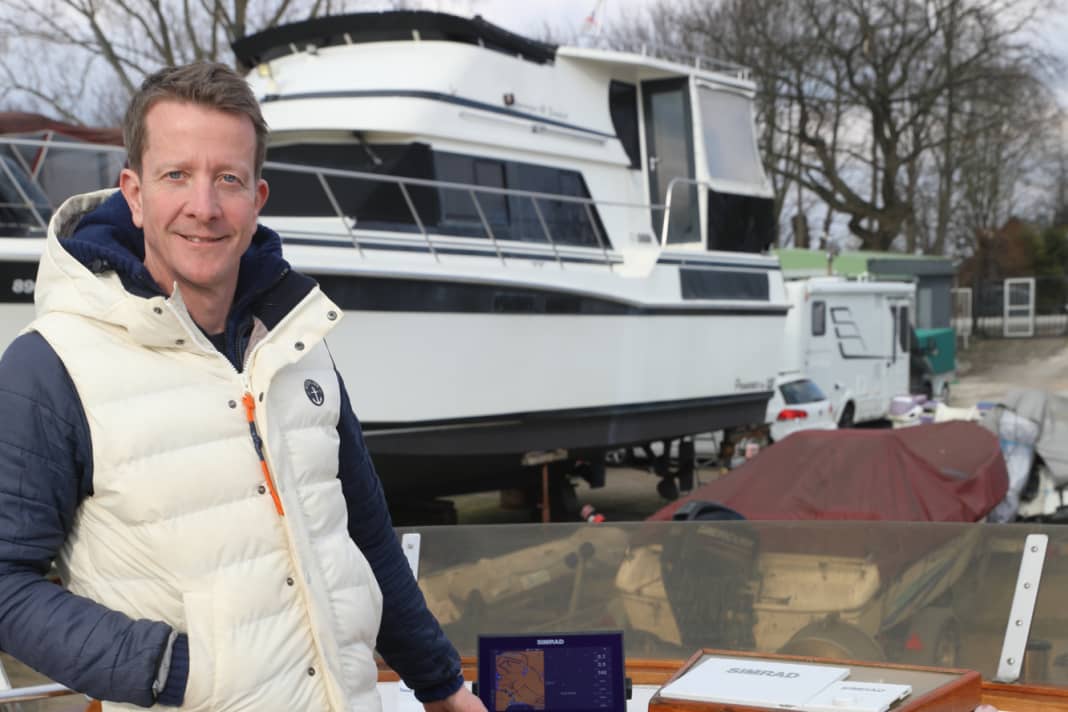Interview: Emigrating on your own keel - with a trawler to the Mediterranean
Jill Grigoleit
· 24.03.2024



Hello Thorsten! In mid-April, you'll be closing your Hamburg flat door behind you for the last time and emigrating with your 15-metre trawler. Practical question: What are you going to do with all your possessions?
Everything I need is on board. I get rid of everything that I haven't had in my hands for a year and that doesn't fit on board. Most things are just anchors that hold you down anyway.
When you found the boat on Ebay classifieds in 2019, it was in a miserable condition. Why did you buy it anyway?
Yes, that's right. It burned first and then sank. If you buy a newer boat with coated chipboard, you can tear everything out if there's water damage. But with older boats, this one was built in 1978, it's similar to building a house. The foundation has to be right. On the boat, this is the hull, the engines, the workmanship and the interior fittings. Once the water was out, I had to take the engines apart. The electrics were a problem. But I knew the rest was right. Everything inside is solid wood, the GRP hull is three centimetres thick and the engines are from 2003 and had only run for 500 hours.
Why first take the boat the almost 5000 kilometres to Hamburg and then drive it all the way back again?
I only realised on the way how good this life on the boat was for me.
It wasn't just the time off or the fact that I was working less. It's the feeling of life on the boat when you're travelling on it. My first trip was mainly about the crossing. But at some point, the destination faded into the background and I started to enjoy the journey itself. The closer I got to the end of the trip, the more I realised that I didn't want to arrive. And the weather also played a big role.
You already know the route. What are you most looking forward to and what are you less looking forward to?
I'm particularly looking forward to the 2500 kilometres of the Danube. In total, I'm travelling through twelve countries or along national borders. It's a really exceptionally beautiful stage. I'm less looking forward to Turkey because the bureaucratic hurdles for clearing in and out are so great here.
What did you learn from the last time?
Above all, not to stress myself out. That's a big challenge because I actually like to get everything done quickly. I have the freedom professionally that it doesn't matter whether I'm travelling for two, three or four months because I can work from anywhere. And if I do have to work longer, I simply stay where I am for an extra day. Most accidents happen under time pressure. Then you drive when it would have been better not to, for example in bad weather. Then I'd rather go and have a beer somewhere and have a look around. I try to take as much as possible in my stride.
When I set off in the morning, I don't want to know where I'm going to dock in the evening. Only the direction is important to me.
There are beautiful bays in the Danube where you can anchor spontaneously. As it is largely a border river, you have to clear in and out every time you go ashore for the first time. Many people who sail the Danube therefore decide in favour of one side. I think that's a shame. In my experience, this is very quick and easy in almost all countries. Because of my 14-year-old male dog Rocky, I always have to go ashore. That means I see a lot more.
What are the biggest challenges of such a trip? What do you have to bear in mind?
The biggest planning challenge is the fuel situation. With my new tanks, I can only travel about 1000 kilometres. That may sound like a lot at first, but there are no marinas or petrol stations on the Danube for up to 1500 kilometres. This time it's less of a problem because I'm travelling with electricity and therefore using less fuel. As far as the power supply is concerned, I'm practically self-sufficient with my solar panels on deck.
Your first trip through the Black Sea was before the start of the war in Ukraine. Don't you have any reservations about travelling there under the current conditions?
No, because I'm not travelling through the Danube Delta. I cut into the canal at Cernavodă beforehand and then exit at Constanta in the Black Sea. This saves me a good 300 to 400 kilometres. The Danube Delta is beautiful. But with this size of boat, I could only stay in the main river anyway. And if I were to sail the Danube Delta, Ukraine would be on one side. And that would actually be difficult in terms of insurance.
Boote will report on the trip

